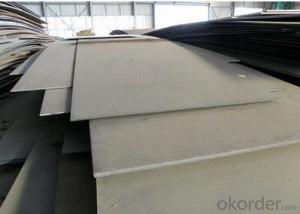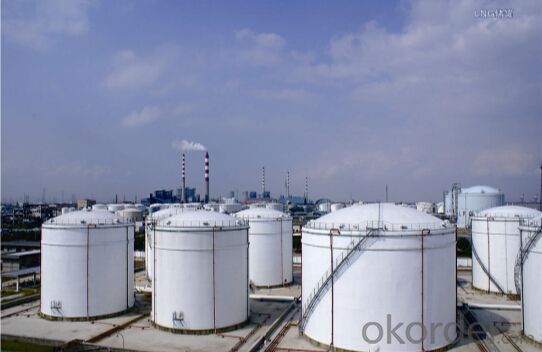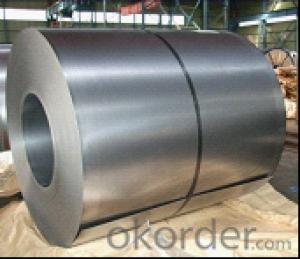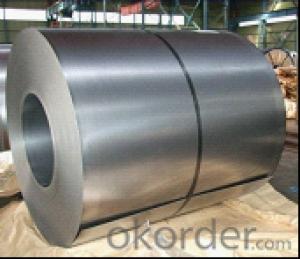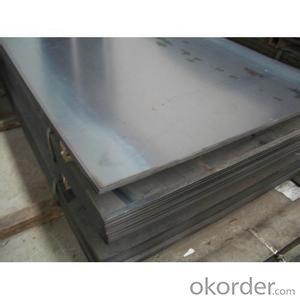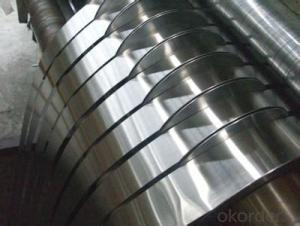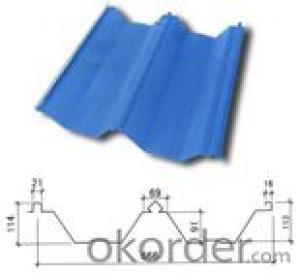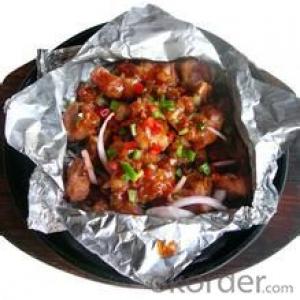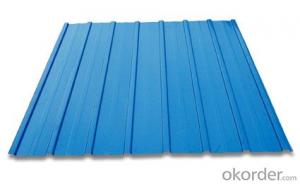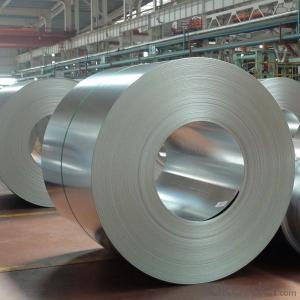Plate Use for Boilers and Containers
- Loading Port:
- China Main Port
- Payment Terms:
- TT OR LC
- Min Order Qty:
- -
- Supply Capability:
- -
OKorder Service Pledge
OKorder Financial Service
You Might Also Like
Plate Use for Boilers and Containers
GRADE:National standards,or in accordance with customer requirements
ADVANTAGES:Excellentseries, specifications series,low weldingcrack sensitivity, highheatinputwelding,welding performancevarieties
Aplication: Production of boilers,pressure vessels,chemical equipment, LNGstorage tanks and oiltanks
Category Arrangingrepresentative Grade Thickness
Used for Boiler and Pressure Vessel Q245R/Q345R/15Cr1MoVR/12Cr2Mo1R GB713 6-80
Pressure vesselsquenched and temperedhigh strength steel 12MnNiVR GB19189 12-40
Low-temperaturelow-alloy steelplatesfor pressure vessels 16MnDR/09MnNiDR GB3531 8-80
Lowtemperaturepressure vessel9% Nisteel 9Ni490/9Ni590A/9Ni590B GB24510 6-36
- Q: Can steel sheets be perforated?
- Yes, steel sheets can be perforated. Perforating steel sheets involves creating a pattern of holes or perforations in the material, which can be achieved through various methods such as punching, drilling, or laser cutting. This process is commonly used in industries like construction, automotive, and manufacturing for applications such as ventilation, filtration, acoustic panels, or decorative purposes.
- Q: Can the steel sheets be easily drilled or machined?
- Yes, steel sheets can be easily drilled or machined with the right tools and equipment.
- Q: Can steel sheets be used for artistic or sculptural projects?
- Absolutely! Steel sheets have endless potential for artistic and sculptural endeavors. This remarkable material boasts incredible flexibility, allowing for a vast array of creative opportunities. Its exceptional strength and durability make it ideal for both indoor and outdoor masterpieces. With steel sheets, you can effortlessly cut, weld, shape, and manipulate them to fashion intricate designs, sculptures, and installations. Artists and sculptors favor steel sheets for their remarkable ability to retain intricate details and withstand diverse weather conditions. Furthermore, steel sheets can be painted, polished, or treated to achieve various textures and finishes, amplifying the artistic allure of the final masterpiece. All in all, steel sheets offer artists a robust and adaptable medium to unleash their creativity and breathe life into their artistic visions.
- Q: Are steel sheets suitable for swimming pool construction?
- Yes, steel sheets are suitable for swimming pool construction. They are often used as a structural material for the walls and floor of swimming pools due to their strength, durability, and ability to withstand the pressure of water. Steel sheets are resistant to corrosion and can be easily shaped to fit the desired pool design. Additionally, steel sheets provide stability and ensure the longevity of the swimming pool.
- Q: Can steel sheets be used for transportation equipment?
- Certainly, transportation equipment can utilize steel sheets. The transportation industry extensively relies on steel due to its robustness, longevity, and cost-effectiveness. When it comes to constructing various transportation vehicles like cars, trucks, buses, trains, ships, and airplanes, steel sheets are frequently employed. These sheets find their application in the body panels, chassis, frames, and other fundamental components of these vehicles. Steel sheets possess remarkable mechanical attributes, including exceptional tensile strength and impact resistance, rendering them suitable for enduring the strains and requirements of transportation applications. Moreover, steel is renowned for its ease of formation and weldability, enabling manufacturers to fabricate intricate shapes and structures specifically needed for transportation equipment.
- Q: Are steel sheets suitable for oil rig platforms?
- Yes, steel sheets are suitable for oil rig platforms. Steel is commonly used in the construction of oil rig platforms due to its strength, durability, and ability to withstand harsh offshore conditions. It provides the necessary structural integrity and resistance to corrosion, making it a reliable choice for such applications.
- Q: Are steel sheets suitable for modular construction?
- Yes, steel sheets are highly suitable for modular construction. Steel is known for its strength, durability, and versatility, making it an ideal material for constructing modular buildings. Steel sheets can be easily fabricated and assembled into various modular components, ensuring precision and accuracy in the construction process. Additionally, steel provides excellent structural integrity, resistance to fire, and is highly resistant to environmental factors such as moisture and pests. These qualities make steel sheets an excellent choice for modular construction projects.
- Q: Are steel sheets suitable for interior ceiling panels?
- Yes, steel sheets are suitable for interior ceiling panels. They are durable, fire-resistant, and can provide a modern and sleek appearance to any space. Additionally, steel sheets are easy to clean and maintain, making them a practical choice for interior ceiling applications.
- Q: Are steel sheets suitable for harsh weather conditions?
- Yes, steel sheets are highly suitable for harsh weather conditions. Steel is known for its durability and strength, making it an ideal material for withstanding extreme weather conditions such as high winds, heavy rain, snow, and even hail. Steel sheets are designed to be resistant to corrosion, rust, and degradation caused by prolonged exposure to harsh weather, making them long-lasting and reliable in any climate. Additionally, steel sheets can be coated with protective finishes, such as galvanized or painted coatings, to further enhance their resistance to weathering. This makes steel sheets a popular choice for various applications in harsh weather-prone areas, including roofing, siding, and outdoor structures, as they provide excellent protection and structural integrity even in the toughest weather conditions.
- Q: Can steel sheets be used for architectural cladding?
- Yes, steel sheets can be used for architectural cladding. Steel is a popular choice for cladding due to its durability, strength, and versatility. It can be used to create a modern and sleek aesthetic and is available in various finishes and colors. Additionally, steel cladding provides excellent weather resistance and requires minimal maintenance, making it a suitable material for architectural applications.
Send your message to us
Plate Use for Boilers and Containers
- Loading Port:
- China Main Port
- Payment Terms:
- TT OR LC
- Min Order Qty:
- -
- Supply Capability:
- -
OKorder Service Pledge
OKorder Financial Service
Similar products
Hot products
Hot Searches
Related keywords
